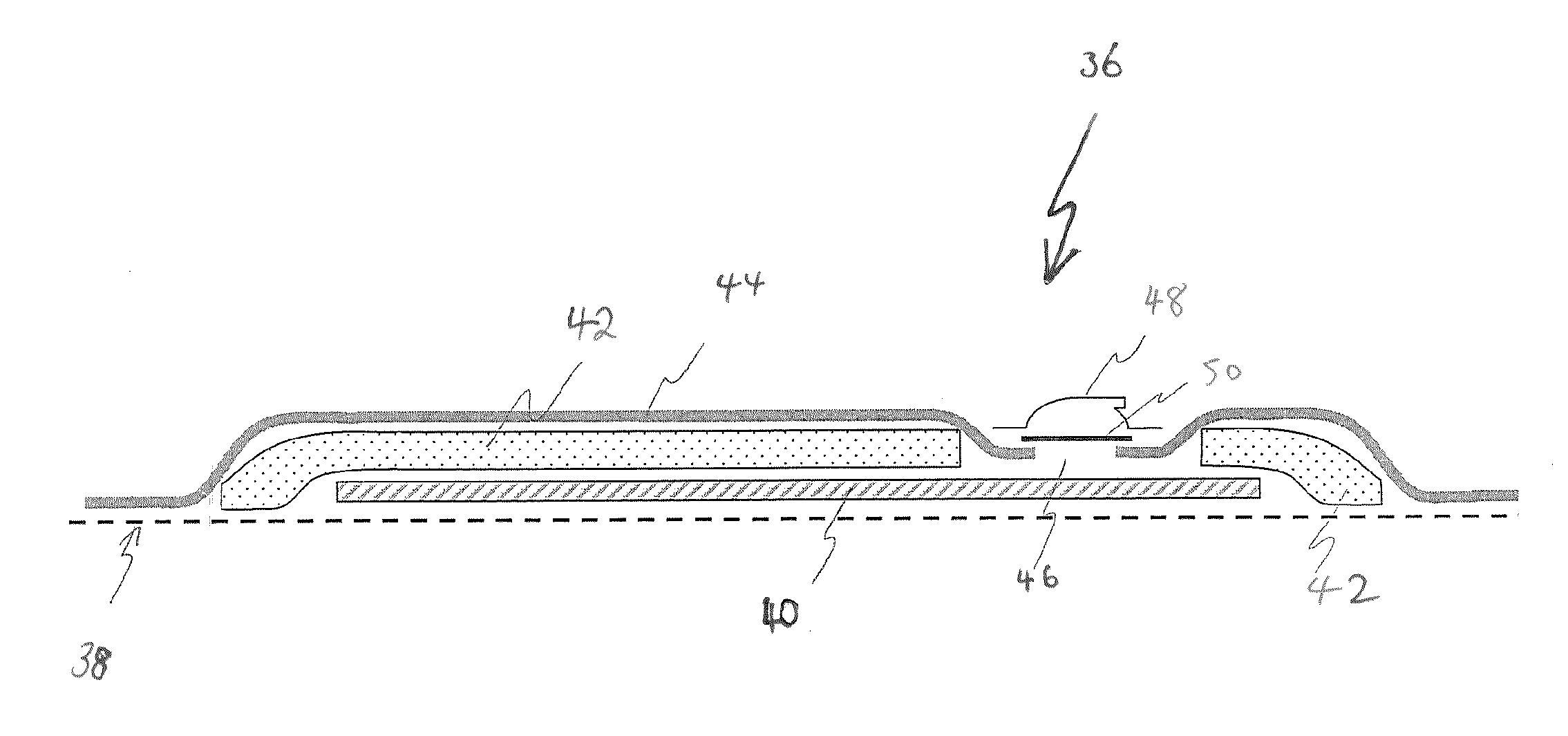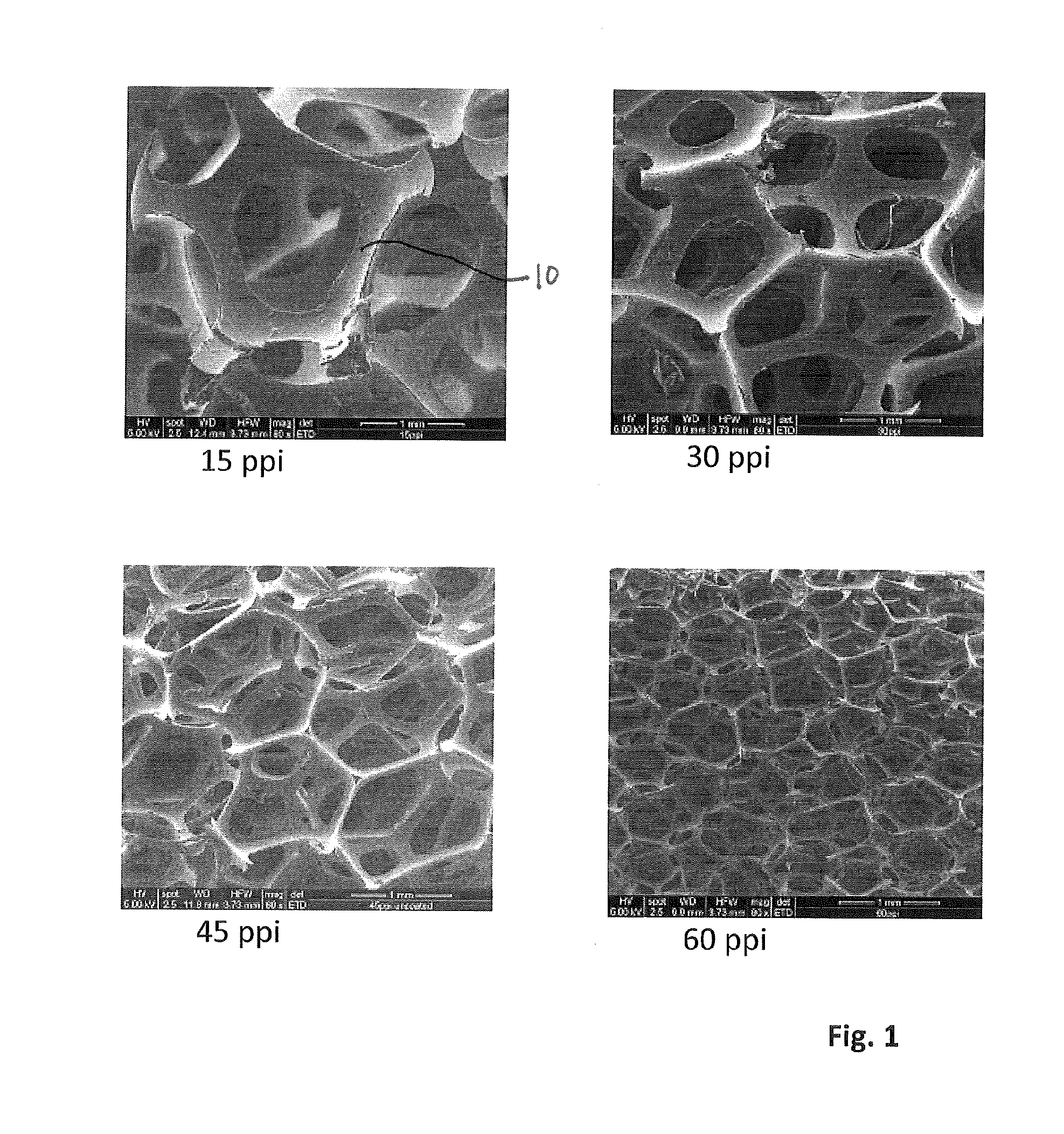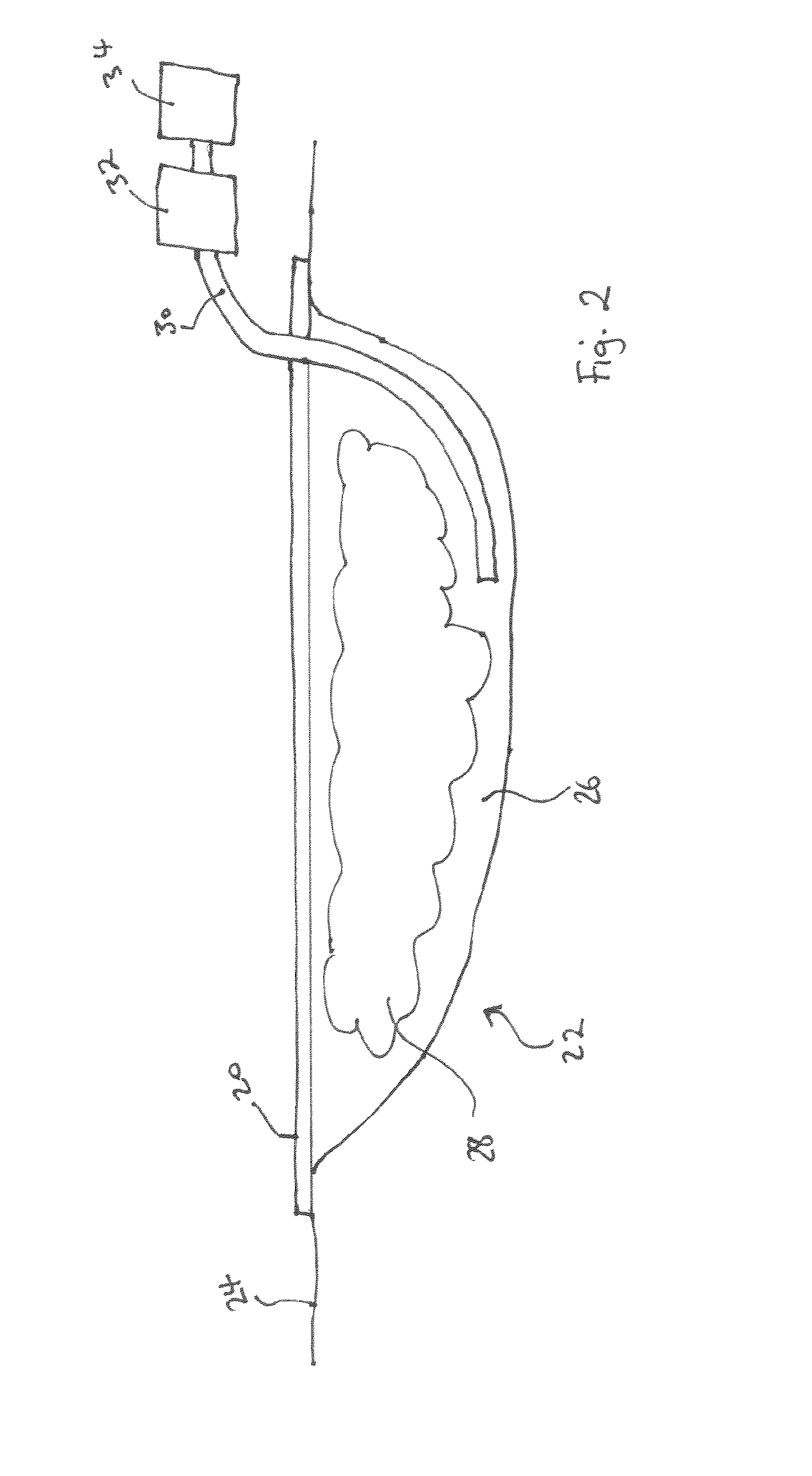Wound contacting members and methods
a technology for contacting members and wounds, applied in the field of wound contacting members and methods, can solve the problems of requiring rapid growth of (tissues), affecting the healing effect,
- Summary
- Abstract
- Description
- Claims
- Application Information
AI Technical Summary
Benefits of technology
Problems solved by technology
Method used
Image
Examples
example 1
[0133]The inventors tested parameters of a number of foams having different pore counts including 15 ppi, 30 ppi, 45 ppi and 60 ppi foam. Results are shown in Table 1, below.
[0134]The inventors viewed the foams under stereomicroscope and scanning electron microscope (SEM). Images from the SEM study are shown in FIG. 1. The inventors also viewed the foams in a compressed state under SEM.
[0135]The inventors calculated foam density and foam ‘openness’ including the percentage of struts, surface area of the struts, percentage of pores, and anisotropy of the pore space, using the techniques described below under ‘Measurement Techniques’. Specifically, all measurements other than average density were measured by micro-CT analysis as described below.
TABLE 1Parameter15 ppi30 ppi45 ppi60 ppiAverage density0.0310.0360.0280.027(g · cm−3)% strut presence2.83.52.22.3Surface area of92203202336the struts (mm2in a 126 mm3volume)% pores97.296.597.897.7Anisotropy of1.201.321.241.24pore spaceStrut wid...
example 2
[0138]The inventors studied the effects of foams with different pore sizes under NPWT in an in-vivo porcine wound model. Wounds were created, a piece of foam was sutured to the wound for histological purposes, a further circular piece of foam of 6 cm diameter and 2 mm deep was added to the wound for pull-out force data purposes, and then the wound was treated with NPWT. Each wound was circular (i.e. having a circular wound base), 6 cm in diameter and 2 cm deep, reaching subcutaneous tissue.
[0139]After 72 hours NPWT at −125 mmHg constant pressure, the foam and underlying wound bed were cut away and inspected histologically using light microscopy. Images of the results are shown in FIG. 6. As can be seen from FIG. 6, the indentation of the strut 115 of the 15 ppi foam into the tissue of the wound bed 102 is significantly greater than the indentation of the strut 130 of the 30 ppi foam.
[0140]The average depth of imprint of the foam into the wound bed was also measured histologically. T...
example 3
[0149]The inventors tested parameters of a number of foam pieces having different pore counts including 10 ppi, 15 ppi, 20 ppi and 30 ppi. The results are shown in Table 3. The results shown in Table 3 relate to uncompressed (at rest) foam samples, unless labelled as ‘under compression’. For the ‘under compression’ data, samples of 40 mm×18 mm×30 mm (thickness of 30 mm) were compressed by sandwiching between two plastic slides and taping together, such that the sample had a thickness of 6 mm.
TABLE 3Parameter10 ppi15 ppi20 ppi30 ppiNominal pore10152030count (ppi)Pore size as2.541.691.270.85calculatedfrom ppi (mm)Pore size0.25-1.620.25-1.420.22-1.320.15-0.89range -undercompression,as measuredby micro-CT(mm)Most frequent1.250.870.660.50pore size -undercompression,as measuredby micro-CT(mm)Pore size3.13-5.492.72-4.162.31-3.751.08-2.21range -notcompressed,as measuredby micro-CT(mm)Most frequent4.703.403.301.85pore size -notcompressed,as measuredby micro-CT(mm)Strut width0.007-0.6310.007-...
PUM
 Login to View More
Login to View More Abstract
Description
Claims
Application Information
 Login to View More
Login to View More - R&D
- Intellectual Property
- Life Sciences
- Materials
- Tech Scout
- Unparalleled Data Quality
- Higher Quality Content
- 60% Fewer Hallucinations
Browse by: Latest US Patents, China's latest patents, Technical Efficacy Thesaurus, Application Domain, Technology Topic, Popular Technical Reports.
© 2025 PatSnap. All rights reserved.Legal|Privacy policy|Modern Slavery Act Transparency Statement|Sitemap|About US| Contact US: help@patsnap.com



